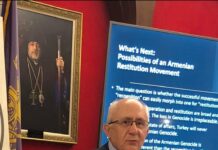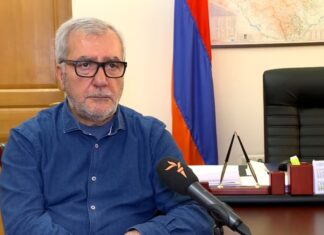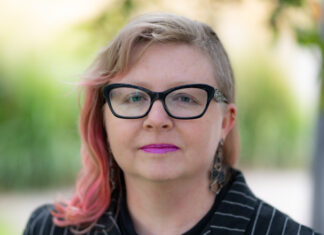VATICAN CITY (PanArmenian.net) — Prior to Pope Francis’ April 24 Mass at St. Peter’s Basilica commemorating the 100th anniversary of the Armenian Genocide, newly released historic documents confirm the Holy See’s broad commitment to helping the Armenian people at a time when few others would, says the Catholic News Agency (CAN).
The Italian Jesuit-run magazine La Civiltà Cattolica stressed that newly published documents “prove how the Holy See, always informed about events, had not remained passive, but was strongly committed to face the issue” of the Armenian Genocide. “Benedict XV was the only ruler or religious leader to voice out a protest against the ‘massive crime’.”
The Armenian Genocide is considered to have begun April 24, 1915 with a massacre of Armenians in Istanbul. Over the next eight years, 1.5 million Armenians would be killed and millions more displaced. However, such killings were perpetrated before, when much of the region was still under Ottoman rule, CAN notes.
For instance, a March 27, 1896 letter by the Franciscan Father Domenico Werson, who was serving as a missionary in Aleppo, recounted the massacre of Christians in Marash and nearby vicinities.
Most of the documents in the newly published series are from the archive of the Congregation for the Eastern Churches. They have been published in a series of four books by the Jesuit priest Fr. Georges-Henry Ruyssen. In advance of the series’ March 21 release date, the latest edition of La Civiltà Cattolica has published a summary.
The documents on the Armenian Question date from the end of the 19th century to the first half of the 20th century. The collection of documents includes letters from Popes and to Ottoman sultans; documents and dispatches by Vatican Secretaries of State and prefects or secretaries of other Vatican dicasteries; documents and reports by the Apostolic delegates; and letters by Armenian patriarchs and bishops with firsthand information. There are also reports by eyewitnesses that clearly describe what was going on.
The documents note the actions of Pope Benedict XV, who sent two personal letters to Sultan Muhammad V Reshad on September 10, 1915 and March 12, 1918, respectively. The Pope’s effort was the climax of several attempts at mediation carried forward by the Holy See to help Armenians. Pope Leo XIII tried a mediation beginning in 1859. The Holy See sought to be a mediator with Djemal Pashà, commander of the Turkish army in Syria, for the freedom of 60 Armenians sentenced to death in 1917. Cardinal Pietro Gasparri, the Vatican Secretary of State, mediated with Mustaphà Kemal Pashà in 1921 for the safeguard of the lives and the goods of surviving Christians in Turkey.
The Holy See did not only work in diplomacy, but also sought to assist surviving refugees. The Holy See, La Civiltà Cattolica writes, “mobilized a continual flow of financial aid and supplies in an era when there were no other international humanitarian organizations beyond the Red Cross and the Near East relief.”
The Holy See specially assisted orphans, and founded “many orphanages” open to people of every religious confession. Young orphan Armenian girls were also hosted in the orphanage in the Apostolic Palace of Castel Gandolfo, near Rome.
The documents record the reasons why countries did not take any stance on the genocide and did not defend the Armenian people when the first signs of genocide were visible.
La Civiltà Cattolica underscored that in the late 19th century, the question of the future of the Armenians “was forgotten step by step,” because the “gradual passivity of European diplomacy” worked to “preserve at every cost the integrity of the Ottoman empire.”
Archbishop Augusto Bonetti, the apostolic delegate to Constantinople from 1887-1904, summarized the international situation.
France and Russia both aimed to preserve “the integrity of Turkey.” France had made major capital investments in the region, while Russia wanted Turkish relations to be dormant so it could focus on the Far East.
In Bonetti’s view, Germany had a material interest in the continuation of the war between the Greeks and the Turks, while England had “important political interests in Turkey.”
Newly Released Vatican Documents Shed Light on Armenian Genocide
Top 5 Articles
- Trending
- Most Viewed
- Most Commented
- Valerian Markarov: Writing Russian and Being Armenian in Georgia
- US and European Aid Package to Armenia Is Not Only Cheap, It’s Dangerous
- California Armenian Legislative Caucus Foundation Announces Scholarships in Remembrance of the Armenian Genocide
- Recipe Corner: Kohar Avakian’s Cherished Family Recipe for Tutum
- By Pleasing Foes, Armenia Is Diving Headfirst into the Abyss
- Why I Am Grateful to Erdogan, the Dictator of Turkey
- A Political Whirlwind Engulfs Nagorno Karabakh
- Libya’s Interim Government Recognizes the Armenian Genocide Once Again
- Robert Bedrosian Marries High Tech With Ancient Armenian Manuscripts
- Aleppo Aid through St. Kevork Armenian Apostolic Church of Houston








